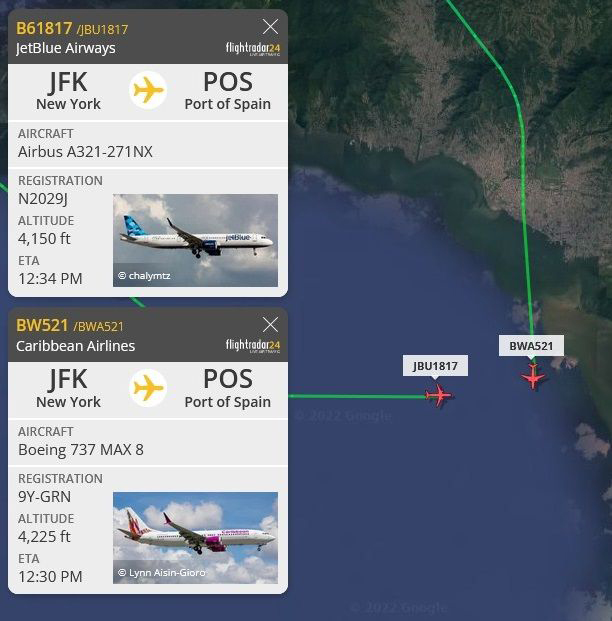(Trinidad Guardian) The Air Traffic Control Radar system at the Piarco International Airport was inoperative when the pilot of a JetBlue Airways aircraft was forced to take evasive action to prevent a possible collision with a Caribbean Airlines aircraft on Sunday.
This was confirmed by the Director General of the T&T Civil Aviation Authority Francis Regis in an emailed response to Guardian Media yesterday.
On Sunday, JetBlue flight 1817 was flying at 4,150 feet in an easterly direction over the Gulf of Paria on its final approach to Piarco at 12.34 pm, when it informed the tower that Caribbean Airlines flight 521 was on a trajectory to cross its path at nearly the same altitude.
“The TTCAA confirms that there was a traffic incident which is being investigated by the TTCAA,” Regis stated.
With incidents like the near collision, an investigation is launched to determine the root cause and to make recommendations to prevent a recurrence.
“We further confirm that the radar system was out of service at the time of the incident,” he stated.
Guardian Media was informed by a source with knowledge of the situation that the radar has been inoperative for a few weeks now, as it requires a part from the Italian manufacturer to become operational.
The radar system was purchased with a package of recommended spare parts.
Regis yesterday said that despite the issues with the radar, air traffic controllers have the situation under control.
“The TTCAA wishes to assure you and the public that all air traffic controllers are trained and qualified to provide safe and reliable air navigation services in the absence of radar equipment,” Regis stated.
Aviation expert Ramesh Lutchmedial yesterday explained to Guardian Media what transpires in the case of a radar being non-functional.
“They resort to Procedural Air Traffic Control. With this method, the pilots report their GPS position, heading and altitude via two-way radio to the controller who records it on a strip,” Lutchmedial stated.
“With radar, the controller can see where each aircraft is with the heading and altitude, also the radar software has a conflict resolution feature that red flags whenever two aircraft breach the vertical or horizontal separation minima,” he stated.
Lutchmedial said what saved the day on Sunday was that the onboard Traffic Collision Avoidance Systems on each aircraft gave a resolution advisory to the pilots to take evasive action.
The radar data is archived and can be replayed during an investigation.





